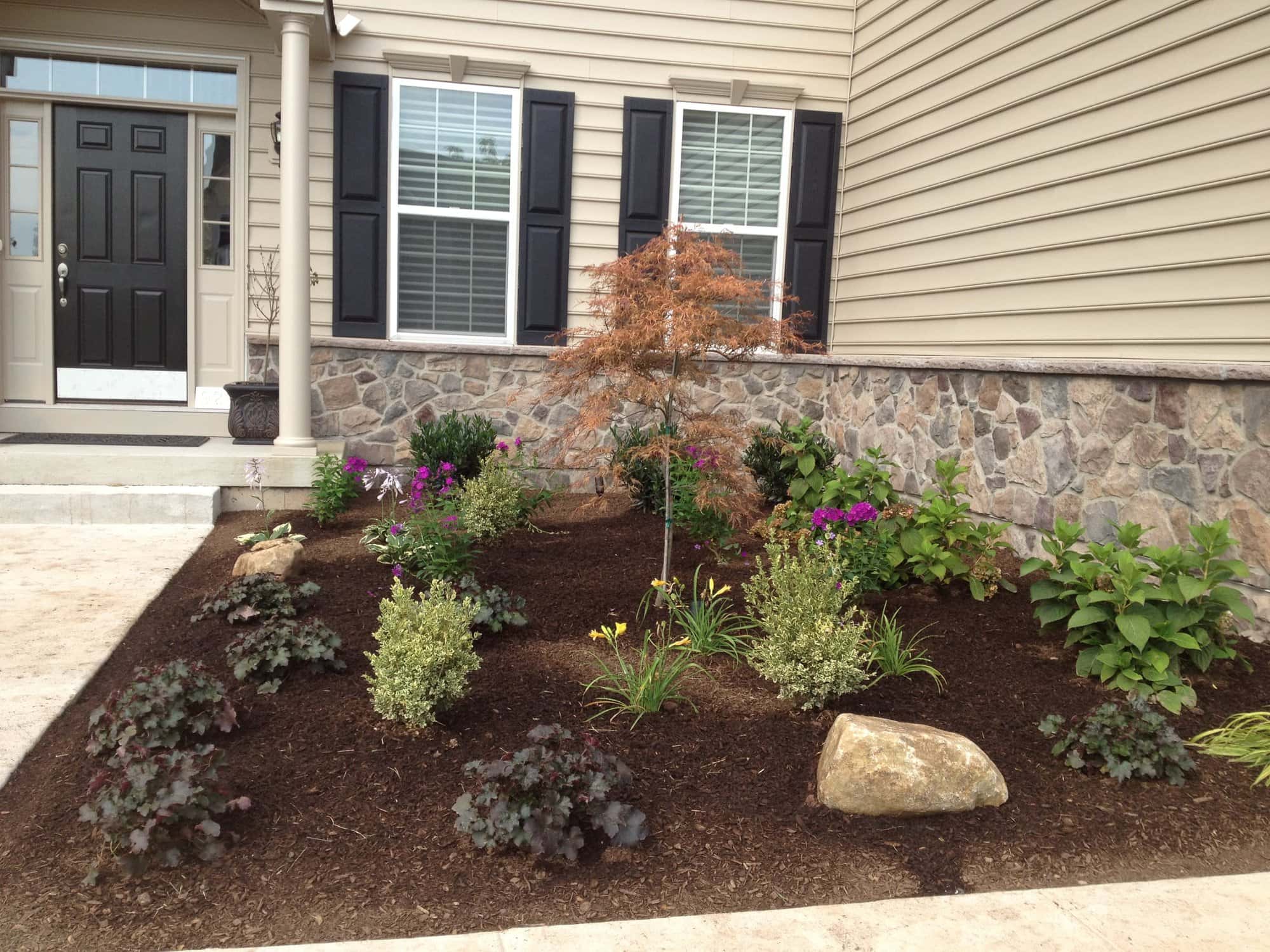We all want clean, beautiful beds on our property but the question is what type of material will work best for your yard? The three different types of mulch available are: bark mulch, stone or living groundcover and to help you decide, we will break down your options into organic and inorganic, and briefly describe the pros and cons of each and where they might work best.
Shredded Hardwood Mulch (Organic) -The Optimal Choice for Plants
Mulch provides important health benefits to soil and plants. Shredded hardwood bark mulch is by far the most popular material and one that we use often for our maintenance clients in the Pottstown, Gilbertsville, Phoenixville and nearby communities.
The benefits include: suppressing weeds, breaking down over time to feed the soil, retains moisture during periods of drought, maintain soil temperatures to help plants thrive in summer and winter, and improves appearance and gives a ‘finished’ look to the landscape.
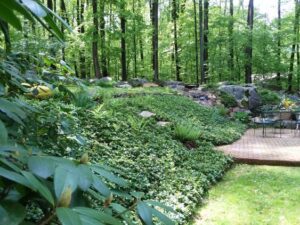
A slope on this Schwenksville property planted with pachysandra groundcover makes this feature practically maintenance free.
Groundcover Plants (Organic) – Great for Larger Sloped or Wide Open Areas
Groundcovers are great for embankments because they usually have a stable root system to hold the soil or where it’s an expansive open area where you need the space to fill in.
Related Reading: Groundcovers Complement any Landscape
Related Reading: Looking for Low Maintenance? Try Liriope
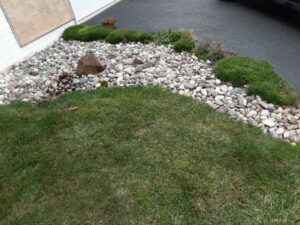
The base of a downspout is a perfect place to add stone to absorb the excess runoff.
Gravel or River Rock (Inorganic) – A Good Choice for Drainage and Soil Erosion
Rock will never break down and although rock will not improve your soil nor inhibit weed growth, you don’t ever have to replace it. In some situations, rocks can benefit from a fabric weed barrier to discourage weeds.
It’s available in a wide choice of sizes, colors, textures and shapes.
The biggest benefit is erosion prevention. Rock allows water to drain quickly. If you have a slope whether it is steep, or terraced, it will stand up to heavy rainfall especially if you use larger rock s. Stone tends to heat up the soil so you might need more heat and drought tolerant plant materials. Many folks like to apply stone around the foundation of a home or the base of a downspout.
There’s also another trend called gravel gardening – an area with a gravel stone surface. Dry areas benefit from using gravel mulch. It allows for a sustainable plant community that can thrive with natural rainfall.
Relating Reading: Landscaping with River Rock
Warning: If your property has a lot of leaves and debris that drop, than rock can look messy over time as it accumulates junk.
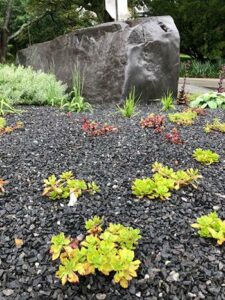
An example of a gravel garden at Swarthmore College. Photo Credit: S. Quinn
Maintenance and Cost
Your beds will be automatically transformed with a fresh layer of dark mulch. But it eventually fades and breaks down over time, requiring you to replace it every year. Many Whitehouse Landscaping clients replace it in the spring and sometimes in the fall.
Rocks, however, require little maintenance. If they settle over a long period of time, you may want to add a new top layer.
Rock is more expensive than bark mulch but since you don’t have to replace it every year, you can save money over time.
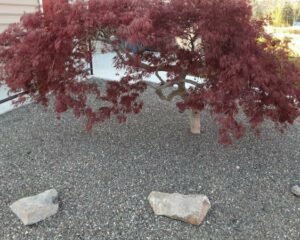
A single Japanese Maple planted in a gravel bed.
Best Choice for Your Landscape
It boils down to your taste, design and individual circumstances. All three can make an excellent choice for your Pottstown, Gilbertsvile, Phoenixville, PA or surrounding areas but knowing the pros and cons before you decide can help you make an informed decision.
Also know you can use a combination of different materials. Use mulch for level planting areas and stone for erosion areas.
If a curvy bed filled with colorful annuals and perennials excites you, then bulk mulch should be your choice. However, a crisp bed of rocks with some ornamental grasses appeal to you, then go for a more modern feel.

